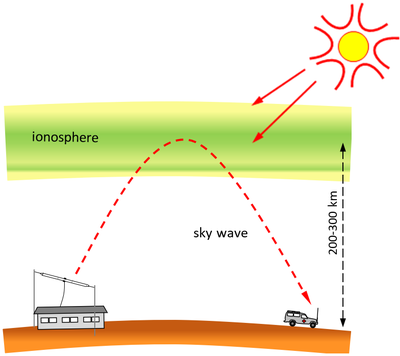The ionosphere
The ionosphere is not a homogeneous layer, and the composition of ionized particles varies and is very different in the daytime versus night.
During the day, X-rays and UV light from the Sun provides the energy that knocks electrons free from atoms and molecules, producing a continuous supply of ions and free electrons. At the same time, some of the ions and electrons collide and re-combine to form normal, electrically neutral atoms and molecules. During the day, more ions are created than are destroyed, so the number of ions in the three regions increases.
At night, in the absence of sunlight, the number of ions drops due to recombination. Generally, the D region disappears entirely and the E region weakens as the number of ions in that layer plummets. Each morning, as solar X-rays and UV light return, the D and E regions are repopulated with ions. The F region, the ionospheric region that has the highest altitude, sticks around throughout the night, but generally splits into an upper F2 layer and a lower F1 layer during the day.
Radio waves generally travel in straight lines, and the curvature of the Earth limits the range of radio transmissions to the horizon. However, the electrically charged particles of the ionospheric plasma reflect radio waves in the HF (3-30 MHz) frequency range, allowing world-wide communication. Radio operators have to account for the changes in the ionosphere, to effectively take advantage of these mirror-like reflections of radio waves. For that, they use models of the ionospheric “climate” and measurements of the real-time ionospheric “weather”.

Humanitarian radio communication using the ionosphere as a high-altitude reflector. (Credit: B.A. Witvliet, PITHIA-NRF)
For questions, please contact outreach@pithia-nrf.eu
